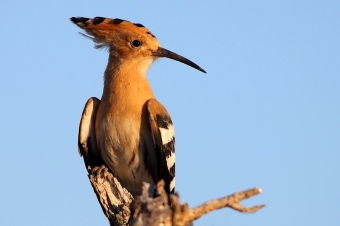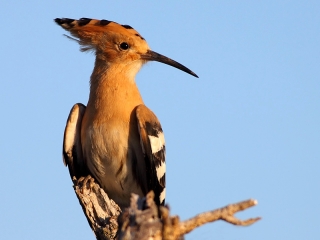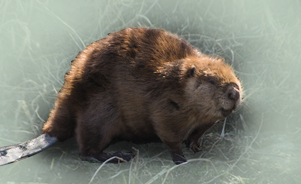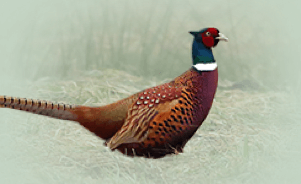Eurasian hoopoe Upupa epops

Features
Its call is typically a trisyllabic oop-oop-oop, from which it also received its Latin name.
| Species | Bird |
| Living space | Field, Meadow |
| Size | 25 - 29 cm |
| Weight | 70 - 80 g |
Description
We can recognise the Eurasian hoopoe by its wavy, clumsy flight and by its large, wide and rounded wings. Despite its clumsiness, it is very fast. It has large plume of brownish-pink feathers with black tips. Its head, chest and abdomen are brownish pink, while the wings and tail are black and white. It often sunbathes by squating, spreading out its legs and wings against the ground and tilting its head and beak up to the sky. It has a long and down-bent beak that it plunges into the soil and thus hunts for insects. It catches most of its pray while walking on the ground. The Eurasian hoopoe's habitat is an open dry cultural landscape – marshes, shrubs, fields with rare trees and bushes, as well as old orchards and vineyards. It builds its nests within holes in walls, buildings or cavities of old trees. It prefers to avoid wet areas. As with the related common kingfisher, the Eurasian hoopoe's nest contains a large amount of excrement because stench is a defensive mechanism against predators. Chicks also spray a stinging secretion of the uropygial gland when they feel threatened.
Features Temenica (3)
SPECIAL ogr.




